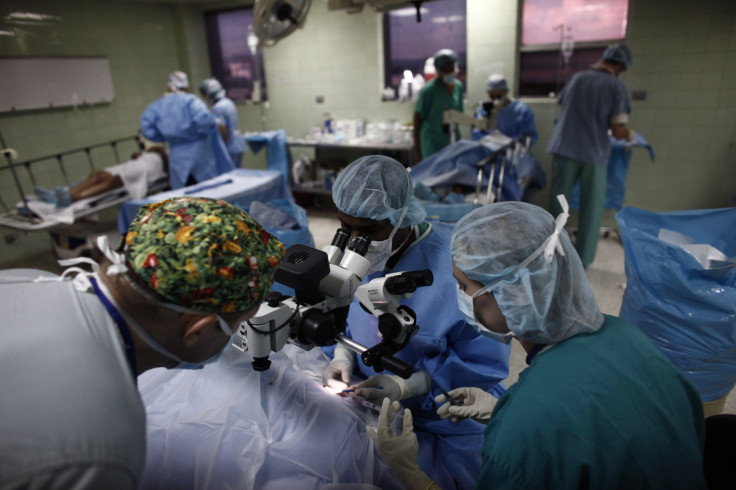Surgery Around The World: Poor Countries Continue To Lack Access While Rich Countries Ramp Up

The use of laparoscopic surgery is considered “one of the greatest disparities in American healthcare,” but even greater disparities exist on a global scale. A recent study published in the Bulletin of the World Health Organization (WHO) has revealed that while surgery access rates continue to increase globally, there are clear disparities between rich and poor countries.
Research has shown that something as trivial as the time of day or day of the week can impact survival rates after surgery, but what about people who don't have any access at all to surgery? Not only do poorer countries suffer from lower rates of surgery access, they also have a higher percentage of post-surgery complications.
"Clearly there are huge disparities in the provision of surgery around the world and this points to an unmet need for surgical and anaesthetic care in many countries," said Dr. Thomas Weiser, an assistant professor of surgery at Stanford University Medical Centre, in a statement.
Weiser and his colleagues measured global health costs in 2012 in terms of total expenditure per capita. Researchers defined countries with “very low expenditure” as spending $100 or less, “low expenditure” as $101 to $400, “middle expenditure” as $401 to $1,000, and “high expenditure” as $1,000 or more. Overall, the number of surgeries increased by 38 percent from 2004 to 2012, however, these results did not persist across all demographics.
Surgery rates did increase among very low expenditure countries and among low expenditure countries. In fact, these were deemed the largest increases during the time period, but when it came to the types of surgeries people require most, there was still a recognizable pattern of healthcare inequality that is consistent with a lack of surgery access in underdeveloped countries.
"Surgical care can be life-saving and also helps prevent long-term disability due to injuries, infections, cancers, and maternal conditions,” Weiser added. “In addition to the disparities in access, the safety of surgical care is of utmost concern, in light of the huge and growing volume of operations being performed annually around the world.”
All in all, around 30 percent of operations performed in 2012 were done in very low-expenditure and low-expenditure countries, which represent 5 billion people, or 71 percent of the global population. C-sections accounted for 29.6 percent of surgical operations performed in very low-expenditure countries and 2.7 percent in high-expenditure countries, which represent 1.2 billion people or almost 18 percent of the global population.
"The study findings suggest that while countries may be providing more caesarian sections per capita than a decade ago, other emergency and life-saving surgical care is simply not available for the majority of people in need in low and middle-income countries," said Dr. Walter Johnson, coordinator of the WHO’s Emergency and Essential Surgical Care Programme.
The World Health Assembly adopted Resolution 68.15: “Strengthening of emergency and essential surgical care and anaesthesia as a component of universal health coverage,” back in May 2015. Countries were asked to add surgical care into their healthcare systems as "a step towards providing universal health coverage.”
"The international donor community has traditionally focused on infectious diseases,” Johnson added. “But now the shift in the burden of disease is from communicable diseases to noncommunicable conditions and injuries. These are, of course, conditions that require more surgical procedures."
A recent study led by researchers from the University of Toronto found that around 72,000 people in India died as a result of acute abdominal conditions in 2010. Access to round-the-clock emergency surgical facilities was considered a critical factor in term of delays in care and deaths. Only 43 percent of the Indian population lived within 31 miles of a well-sourced district hospital in 2010.
Source: Bulletin of the World Health Organization. 2016.
Published by Medicaldaily.com



























